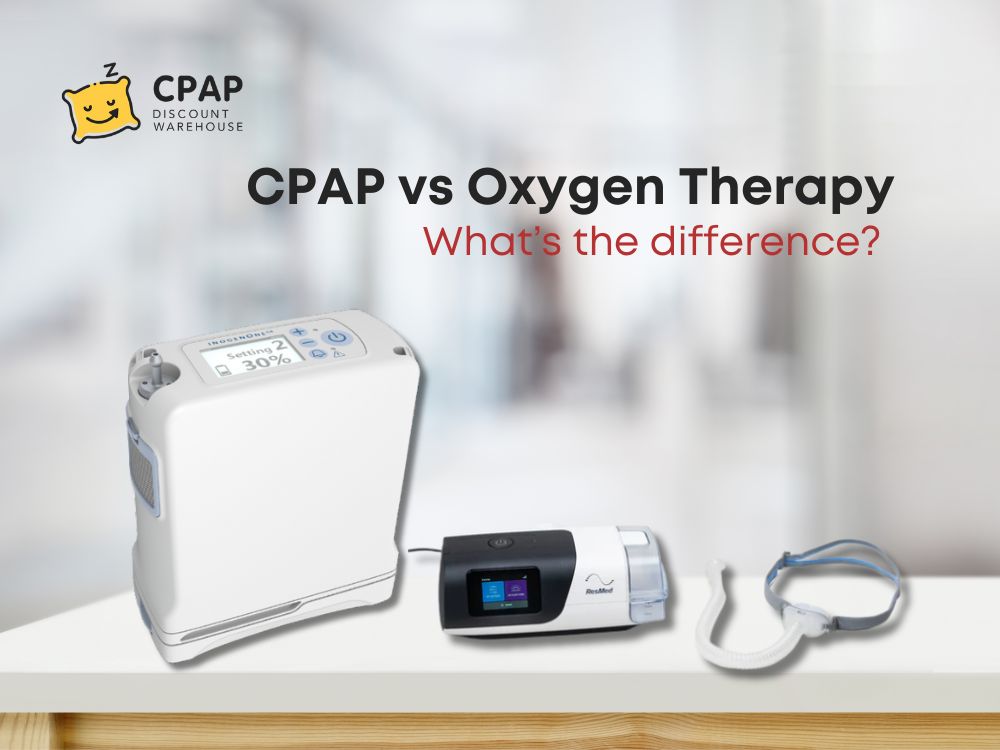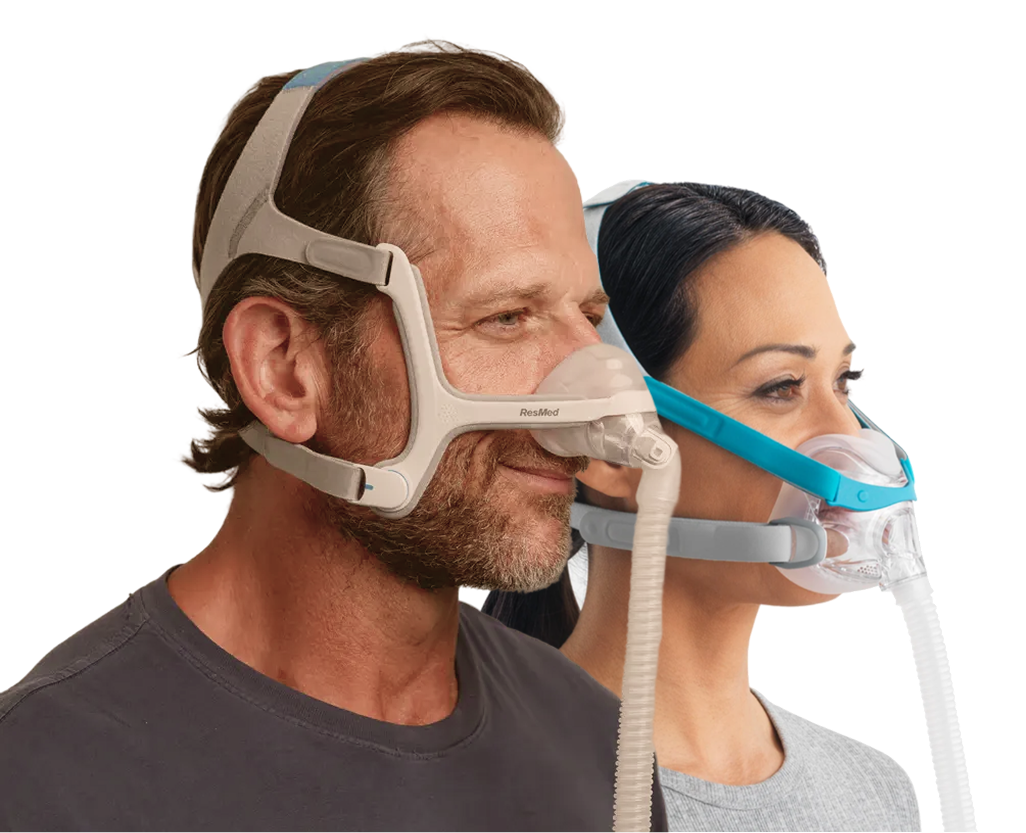Respiratory therapy is essential in treating conditions that interfere with breathing and its normal function, commonly known as sleep apnea, chronic obstructive pulmonary disease (COPD), and so on. Here we have two interrelated therapies: Continuous Positive Airway Pressure (CPAP) therapy and oxygen therapy. Even though closely related, these therapies serve entirely different purposes. Understanding CPAP vs Oxygen Therapy with a CPAP Discount Warehouse in the article.
What is a CPAP Therapy?
Continuous Positive Airway Pressure (CPAP) therapy - The best oxygen concentrator for CPAP helps patients keep their airways open while they sleep. CPAP therapy uses a machine that delivers an uninterrupted flow of air through a mask, maintaining the airway so that breathing during the night can occur without interruption.
Obstructive sleep apnea is a condition where the airway becomes blocked or narrowed, and thus breathing ceases for a few seconds; CPAP therapy is the most recognized form of treatment. It is also useful for sleep disordered breathing due to other causes.
How does a CPAP machine work? Air is fed into the CPAP machine, where it is dosed uniformly and directed to a mask that covers either or both the mouth and nose. Continuous air pressure in the mask prevents any occlusion of the airway so that an individual can breathe freely in sleep. Air pressure is set at an optimum level that would be graded and observed by a healthcare professional following a sleep study.

What Is an Oxygen Therapy?
Oxygen therapy is a medical intervention that addresses oxygen deficiency by offering supplemental oxygen to individuals who have difficulty sustaining reasonable levels of oxygen in their blood. It helps tissues and organs receive more oxygen and, therefore, work properly, thereby relieving shortness of breath, fatigue, or similar symptoms.
Common medical conditions that cause lung impairment and thereby decrease blood oxygen levels include:
-
Chronic Obstructive Pulmonary Disease (COPD): increasing difficulty in breathing; progressive lung disease.
-
Severe asthma: episodes of airway inflammation and constriction that may drop the oxygenation level dangerously low.
-
Pulmonary Fibrosis: Scarring in the lungs and limited oxygen absorption.
-
Pneumonia: an infection that may drop oxygen levels in the blood.
-
Sleep-Related Breathing Disorders: Patients with some types of sleep apnea or hypoventilation syndrome may require oxygen administration.
How does an oxygen concentrator work? An oxygen concentrator extracts oxygen from the air in the surroundings and delivers it to the patients at a higher concentration. In contrast to oxygen tanks with limited storage, the concentrators filter and concentrate oxygen from ambient air; hence, they offer a continuous supply. These devices work in the following way:
-
Drawing in air and removing nitrogen through a filtering system.
-
Delivering purified oxygen to the patient via a nasal cannula or mask.
-
Adjusting flow rates based on the patient's medical needs.

CPAP Therapy vs. Oxygen Therapy
CPAP machines and oxygen concentrators both provide targeted airflow, but they are designed differently, work in different ways and cost different amounts. A CPAP machine uses pressurised air to help keep the airway open while you sleep. An oxygen concentrator provides air that is full of oxygen for people with low blood oxygen levels. CPAP machines are usually smaller, lighter and cheaper to buy. The text is now simpler.
Talk to your doctor to find out what treatment is best for you.
|
CPAP Therapy |
Oxygen Therapy |
|
This is often the best treatment for adults with OSA. |
It makes sure that people get oxygen, no matter what their lung function is. |
|
It blows air all the time to keep the airway of a person sleeping clear. |
You can use it either when you are asleep or when you are awake. |
|
It is only used when you are asleep. |
Oxygen can make fires more likely to happen and more dangerous. It is important to follow safety rules when using oxygen. |
|
Side effects are common, but you can easily deal with most of them by using the right accessories. |
|
Using a CPAP Machine With Oxygen
Sleep specialists usually give patients oxygen and CPAP therapy on their own, but some people with certain health problems may benefit from having both treatments at the same time. Sleep specialists may also prescribe CPAP therapy and supplemental oxygen to people with certain other health problems.
+ Sleep apnea: Supplemental oxygen combined with PAP therapy is used to treat some people with central sleep apnea (CSA), or people with OSA who cannot use a CPAP machine, though it's less effective than CPAP when used by itself.
+ Chronic obstructive pulmonary disease (COPD): Doctors may prescribe Oxygen therapy and BPAP therapy for individuals with low blood oxygen levels related to COPD. It's sometimes treated with a combination of CPAP therapy and supplemental oxygen.
+ Heart failure: CPAP therapy is sometimes prescribed for people with heart failure and OSA. For people with heart failure who experience Cheyne-Stokes respirations, PAP therapy may be combined with supplemental oxygen.
How to Connect Oxygen to a CPAP Machine?
There are two main methods for adding supplemental oxygen to a CPAP device: either through a port on the CPAP mask or by using a bleed-in connector. If your mask has a built-in oxygen port, simply remove the plug and attach the oxygen tubing as directed. If it doesn’t, a bleed-in connector can be used instead. This accessory is placed between the CPAP machine and the hose, providing a port for the oxygen tubing. Some heated hoses also come with integrated oxygen ports, while others may require the connector to be positioned closer to the mask rather than at the machine.
Before adding oxygen to CPAP therapy, patients should consult a healthcare provider to determine the right equipment, settings, and monitoring requirements to optimize their treatment.

Types of Oxygen Systems Used With CPAP Machines
Oxygen Sources Compatible With CPAP:
+ Oxygen concentrators: Oxygen concentrators work by filtering out nitrogen from regular air, leaving oxygen-rich air for the user. Stationary concentrators are bigger and heavier, but they can provide higher oxygen flow and are usually more affordable. Portable concentrators are lighter and easier to carry, though they supply lower oxygen levels and are often more expensive.
+ Oxygen tanks: Oxygen tanks hold oxygen in either liquid or compressed gas form. Since the supply is limited, the tanks must be refilled or exchanged once empty. Larger tanks are designed for use at home, while smaller tanks offer greater portability. However, transporting oxygen is subject to certain regulations, which can make traveling with tanks more challenging.
Pros and Cons of Each System:
|
Oxygen System |
Pros |
Cons |
|
Concentrator |
Continuous oxygen, no refills |
Requires power source |
|
Oxygen tank |
Portable, reliable |
Needs regular refilling |
>>> What are normal oxygen levels during sleep? Is It Apnea?
Frequently Asked Questions (FAQs)
Can You Use Oxygen With a CPAP Machine?
Yes, oxygen can be added to CPAP therapy when prescribed by a doctor to treat conditions like overlap syndrome.
Can you get too much oxygen with CPAP?
Breathing in more oxygen than your body requires can slow down both your breathing and heart rate. Excess oxygen can be harmful.
Are There Specific CPAP Machines Designed to Work With Oxygen?
Most CPAP machines can be used with oxygen via adapters, but some advanced models integrate oxygen more efficiently.
Can oxygen make sleep apnea worse?
Studies show that supplemental oxygen can help reduce AHI, lower the respiratory arousal index, and improve oxygen levels during apneic events. However, it may also prolong the length of apneas, which can increase carbon dioxide buildup.
Conclusion
CPAP vs Oxygen Therapy serve different purposes but can be combined for specific medical conditions. If you suspect you need both therapies, consult your healthcare provider for a personalized treatment plan. Proper medical supervision ensures safe and effective management of respiratory conditions, improving overall health and quality of life.






